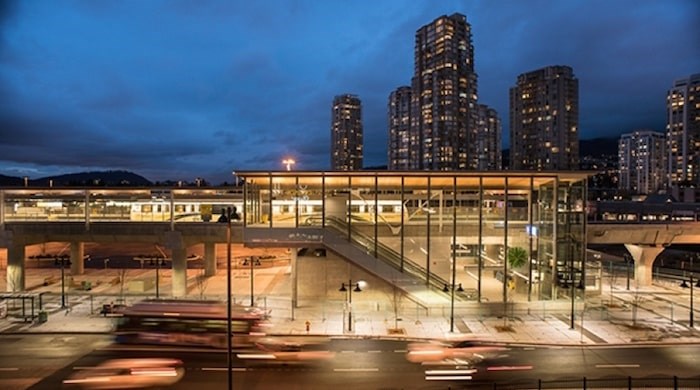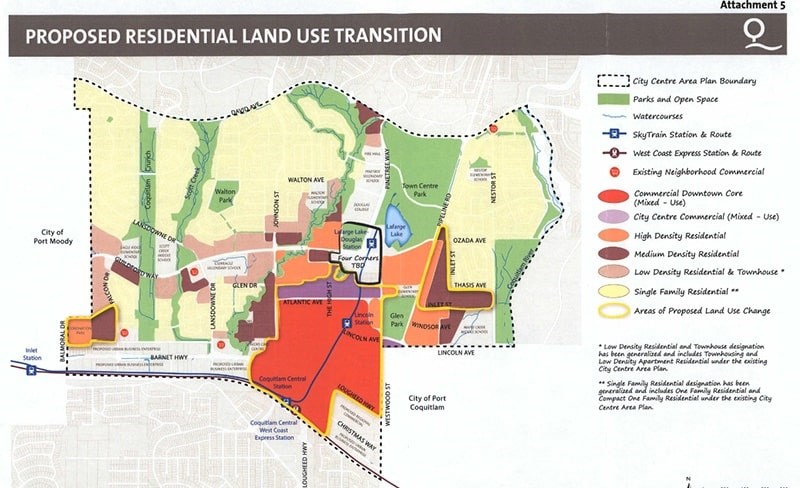Coquitlam’s new plan for its city centre aims to reduce sprawl, stop the destruction of older and still affordable homes, keep a lid on rising assessments and create lively neighbourhoods.
 Development in the updated City Centre Area Plan will continue to focus high density residential development around SkyTrain line stations in Coquitlam. Photo by Steve Ray.
Development in the updated City Centre Area Plan will continue to focus high density residential development around SkyTrain line stations in Coquitlam. Photo by Steve Ray.
Those are the broad brush aims of proposed land use changes for the City Centre Area Plan (CCAP), which focus on areas surrounding existing SkyTrain stations and along the Barnet Highway and Pinetree Way corridor — an area of low density strip malls and parking lots — leaving untouched a large area of single family homes, older mid-rise buildings and newer condos.
“We’re never going to get out of the housing crisis if we tear down all our existing housing,” said Andrew Merrill, manager of community planning.
To make sure high-rises stick close to transit, the CCAP framework being studied by city council already nixes high density housing on the outskirts of these areas.
As a result, planning for the Falcon Drive SkyTrain station will likely be delayed for years until housing around the current stations is built up.
But this is necessary to focus development and prevent sprawl, the city says.
The city has already received requests from property owners advocating for high density residential development along Barnet Highway and Christmas Way, which the city would like to see turned into a mix of commercial, office and light industrial, and three petitions from property owners in the areas of Inlet Street and Falcon Drive, advocating for high density residential development where the city wants to see mid-rise development.
 Proposed residential land use transition for the City of Coquitlam. Image via City of Coquitlam
Proposed residential land use transition for the City of Coquitlam. Image via City of Coquitlam
Concentrating high density development around current SkyTrain stations is necessary to make better use of public infrastructure and create more lively neighbourhoods, Merrill said, while allowing development to sprawl would create a hodgepodge of disconnected neighbourhoods, destruction of existing housing stock and inflated assessments.
Still, if the city is to add 24,000 people by 2046 — its share of Metro Vancouver growth — a lot more construction will be required in the coming decades.
Growth has already been slower than anticipated in recent years, with 1,500 fewer people moving into the area than expected, so any future building would likely have to catch up.
But Merrill said building more towers is necessary to create a lively downtown and make sure there is a place for people to live, as well as leverage contribution for parks and public buildings and keep prices “more affordable” for teachers, firefighters, and other workers.
“We leverage development to get the good things we want, we want library or office space — we need to leverage residential growth to get those,” Merrill said.
But there is a lot of work to be done before the new city centre area plan is complete.
The city is also looking at how to boost the number of office, light industrial and commercial properties to create job and business opportunities in the area, where parks and public amenities should go and how to pay for them and how best to utilize city owned properties at the corner of Guildford Way and Pinetree.
A draft plan will be presented to council this summer, after which a final round of public consultation will take place.



